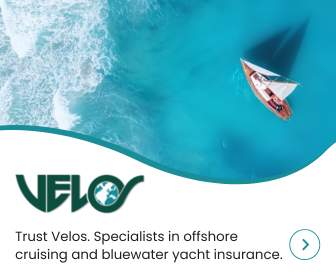Australia: Finding Solitude in the Coral Sea
Extending far beyond Australia’s Great Barrier Reef, the Coral Sea is a favourite, remote cruising ground for Aussie sailors Jack and Jude Binder, with its diverse array of habitats including sandy cays, deep sea plains, canyons, coral reefs and crystal clear waters.
Published 3 years ago
With the long COVID pandemic sharpening their need for adventures far away from viruses, media and authority, long-time Australian cruisers Jack and Jude Binder decided to share their experiences of some of the most remote places they have visited around a continent that has the world’s longest continuous coastline.
The Coral Sea
The Coral Sea occupies part of the Pacific Ocean off the north east coast of Australia, between the parallels of Sandy Cape and Torres Strait and bounded by the south west coast of New Caledonia, to a line drawn to the Louisiade Archipelago and south coast of Papua New Guinea.
It provides a fast unobstructed passage to Cape York with superb diving in clear water without jellyfish. Other attractions include great fishing, heaps of wildlife and solitude.
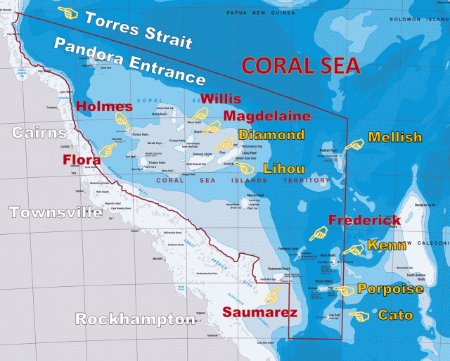

We first took our sons to explore the Coral Coast and Great Barrier Reef in the 1970s, when we were often the only vessel in an anchorage and catching a fish dinner was so easy, we simply jumped over the side to pick which one.
But now, we no longer visit what was once one of the world’s seven natural wonders. Covid and the rent-a-boat fleet have made the Coral Coast overcrowded, the once great fishing has succumbed to professional fishermen grabbing too many fish for our expanding population and coral bleaching has erased the brilliant display of colour underwater.
Instead, we prefer the Coral Sea islets that still offer solitude, great diving, and good fishing in safe, trade wind anchorages. Here are some of our favourite spots.
Wreck Reefs/Porpoise Reefs
A favourite route of ours takes in historical Porpoise Cay in the Wreck Reefs, where in 1803, HMS Cato and Porpoise ran aground while carrying Matthew Flinders home with all his newly-made charts and specimens. There’s a pretty good anchorage on its northern side that lets you dive the windward lagoon and wreck site and maybe spot a cannonball dropped when the ships jettisoned ballast.
You can also explore Porpoise Cay, 275 m long, 90 m wide and 3 m high, vegetated with low grass and a succulent similar to Pig’s Face without the pink flowers. When last visited, White Masked Boobies were courting and nesting on its sandy fringe while brown Common Noddies nested within the foliage. About 20 pairs of Brown Boobies watched us from the half tide rock on the windward edge. Pieces of black coal along the flotsam line lay amongst humanity’s bits of plastic, and embedded in the congealed half tide rock were bits of metal rusting away. The coal and metal likely from the wrecks.
Kenn Reef
Located 270 nm from the Australian mainland, Kenn Reef covers an area of approximately 40 km² – shaped like a boot 8 nm long and 4 nm along its southern edge. The southern reef is the largest with three emergent sand cays on the SW part. The only permanent land, tiny Observatory Cay, about 100 m by 50 m and 2 m high, has no vegetation.
We found excellent anchorage for all winds except northerlies, with easy access to these cays from an extensive shallow patch over the purest white sand. But getting to this anchorage requires careful visual navigation to avoid several coral heads before passing over a 3 m sand spit.

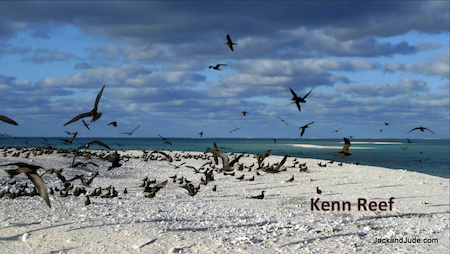
- Bird life abounds on these isolated reefs and cays. (c) Jack and Jude Binder.
Mellish Reef
We would then journey to Mellish Reef, Australia’s furthest possession. It may be too far from the coast for most, lying 550 miles from Gladstone. But not for us. That’s because we like extremely remote islets and have been to Mellish several times before. The first time in 1978!
Mellish has some of the best trade wind anchorages, superb fishing, heaps of wildlife, and good diving. Heralds Beacon, the 100 metre long sand islet, has no trees and little vegetation. But its lagoon is massive, about 20 miles long, with a second smaller sand cay close to its northern end.

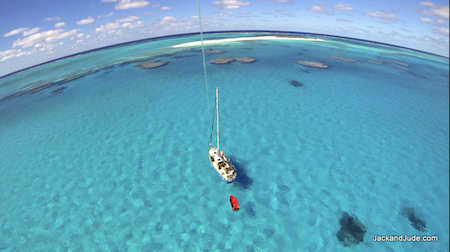
- Mellish Reef is the furthest and most isolated coral atoll – be prepared if going there. Photo (C) Jack and Jude Binder
Coral Sea Diamond
We had read East Diamond Islet has a spectacular anchorage and in photographs we saw extensive low vegetation with many species of seabirds nesting. It’s close to the Australian mainland, so we decided to pay a visit to this lagoon and islet and discovered one of the best Coral Sea anchorages.
At the end of our day sail from Lihou Reef, the breeze faded, and we motored into a well-protected anchorage bright with white sand. A light structure rose out of the cay and everywhere the air was alive with many species of seabirds, featuring the most Frigatebirds we’ve ever seen.
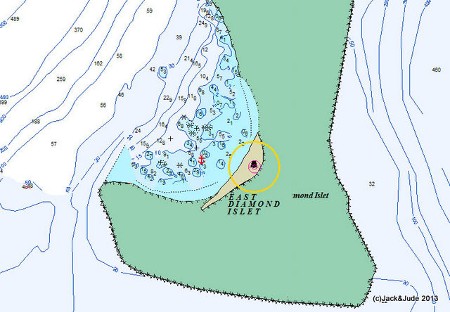

A 2006 report put the numbers at 2,500 Lesser Frigatebirds, a thousand pairs of Red-footed Boobies and very large numbers of Black and Common Noddies, Masked and Brown Boobies, Black-Naped Terns, Sooty Terns, Wedge-tailed Shearwaters, several Red-tailed Tropicbirds and a few Great Frigatebirds.
On shore several species were breeding, including the Frigatebirds and Red-footed Boobies. Several species roosted in the same small tree, so our cameras rolled and shutters clicked for the next five days. We climbed the light structure, and towed our GoPro down the cay, aloft on a parafoil kite. Jude was plainly in heaven when talking about all the creatures as we made a documentary explaining the habits and features of each group.
YouTube: East Diamond Islet Seabird Sanctuary
https://youtu.be/lQjVEQgxa7E

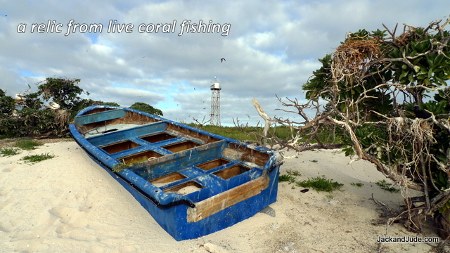
- A relic from live coral fishing.
Jack and Jude Binder
SV Banyandah
Jack and Jude Coral Sea Sailing Guide
https://jackandjude.com/books/coral-sea/
…………………………………………………………………………………………………………………………………………
About the Authors
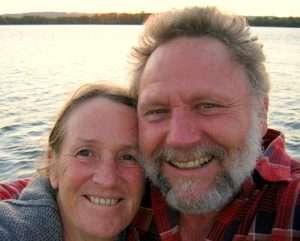

Their blog is filled with simple ideas for making life afloat more fun, safe, and comfortable, including links to Videos, Cruising Guides and Books that they have produced, plus a page on products that served them well during 200,000 miles of ocean travel.
The Sailing Adventures of Jack and Jude
Read Jack and Jude’s other articles for Off the Beaten Path:
………………………………………………………………………………………………………………………………………….
See more “Off the Beaten Path” articles and resources here.
………………………………………………………………………………………………………………………………………
The opinions expressed in this article are the author’s own and do not reflect the view of Noonsite.com or World Cruising Club.
Related to following destinations: Australia, Queensland
Related to the following Cruising Resources: Off the Beaten Path



